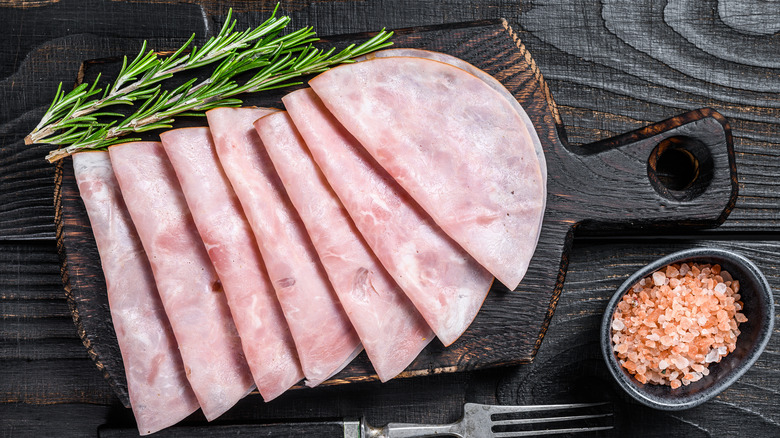Here's What Actually Causes 'Meat Rainbows'
You're at the deli, waiting for your number to be called. While you wait to be helped, you peruse the offerings in the cases. Cold cuts, sliced cheese, premade potato salad, you know the drill. A glimmer of color catches your eye — the roast beef looks like an iridescent rainbow under the deli lights. You decide not to get roast beef.
We've all been there, appetites ruined by lunch meat that looks like a parking lot oil slick. Many of us shy away from these 'meat rainbows' with the reasoning that meat should be some shade of red or brown (via Meat Science). Any other color is usually a cause for worry.
Even though the U.S. Department of Agriculture says some color change is to be expected as meats are exposed to light and oxygen, this knowledge doesn't make that rainbow roast beef any less concerning. Believe it or not, 'meat rainbows' are actually perfectly safe to consume.
The science of a 'meat rainbow'
According to Mental Floss, the primary reason some cold cuts take on a rainbow sheen is the way the meat was cut. Rather than being cut along the grain, these shimmery meats were cut against the grain for a more tender texture. The exposed fiber ends diffract light — such as those bright lights found in a deli. This diffraction causes the pretty rainbow effect.
The 'meat rainbow' isn't entirely due to chemicals, but chemicals do play a small part. A lot of deli meats are cured, meaning preservatives are added to help the meats last longer. Cured meats are usually denser, making their fibers more prone to diffraction.
So yes, you can taste the 'meat rainbow.' It may not be particularly appetizing to eat a piece of roast beef that looks like the shiny side of a DVD, but it's safe. But think of it this way — the more obvious the rainbow, the more tender the meat.

